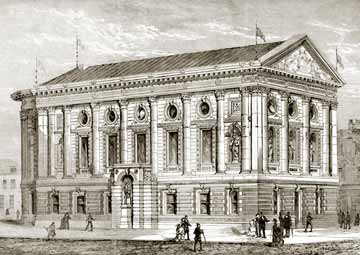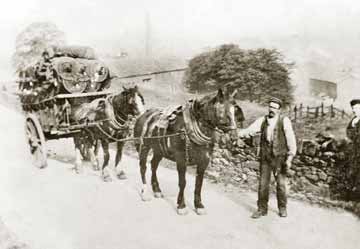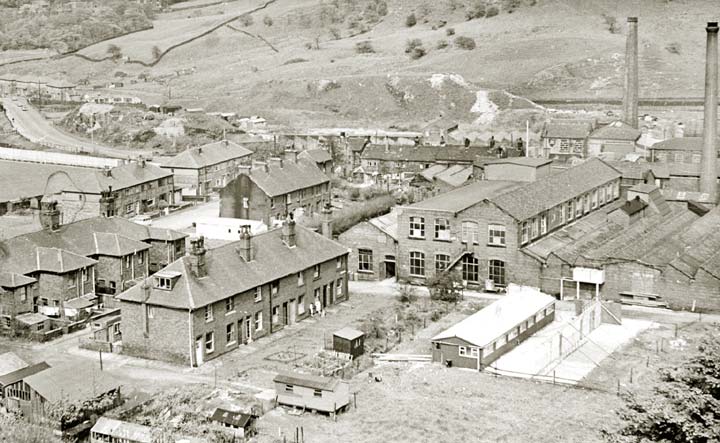|
Home Subscriptions Send us your memories Buy online Links ISSUE 11 CONTENTS Our Happy Hols at Hardcastle Crags |
Tales of Old Todmorden Plans for a Town Hall in Todmorden were proposed as early as 1807 but the magnificent building, designed by architect John Gibson, was not completed until nearly 70 years later. The final scheme got under way thanks to the Fieldens and was finished at a cost of £54,000. This rare lithograph dates from the opening in 1875. Click image to enlarge. Code no CT206 Issy Shannon continues our series delving into the remarkable book written 109 years ago by John Travis. Here’s a small taste: People’s Food Porridge and old milk were then the chief food of most poor folk, and these three times a day was often the general run. Sometimes there was a red herring and bread and potatoes, or a bit of bacon for dinner. At other times a share of parkin, none too big, baked on the backstone and chover (fire pan), with a pot of pennyroyal, or mint teah (sic), sweetened with treacle. That was a good dinner if the parkin had suet in it and needed no dessert to follow. Put into Quod The old lock-up cells for Todmorden and Walsden prisoners were, at a former time, located in a portion of the Black Swan Inn premises, North Street. Then Mr Simon Whipp, who had been a soldier and was owner of a block of cottages situate at Doghouse, altered and partly rebuilt the property, making a number of new cells which stood at the steps, now at the entrance to Ridge Road. There had been a lock-up at Cross Stone for a long time for prisoners on the Yorkshire side of the border, but after a great increase in the population a new place was opened at Stilegate Bottom, Toad Carr, behind the beerhouse kept by Mr James Suthers. Ancient Machinery In 1876, when the farming stock and household effects of the late Mr William Greenwood, of Langfield, were sold off, there was a complete set of hand-carding and other machines for working cotton, still in the house, which had 100 years before been in use by his grandfather, Mr Enoch Greenwood, and family. An invoice was found for one bag of cotton which had cost the sum of £20. The machines were not of a saleable description and were burnt as rubbish. Note: A useful glossary compiled by John Travis is also a mine of invaluable information, on words in common use in the area in the 18th and 19th centuries. A “bang,” for example, was a drinking-bout, “scrattle” was to proceed quietly and the “tully pot” was what went under the bed! John Travis also listed dozens of “bye-names” (nicknames) by which Todmordians were known: “Money bags” was a local merchant, “Larum o’ Diddlum” a hawker, “Gret Booby” was a gentleman and a dyer was known, unfortunately, as “Donkey Face.” The nicknames were extremely descriptive and rarely flattering!
A heavily-laden cart leaves Lumbutts Mill. The carter is believed to be Ashton or Thomas Henry Greenwood, ancestors of Mrs Dorothy Smith who has kindly provided the photo. Code no BT936DS
Gordon Rigg had yet to develop his garden centre on land at Winterbutlee, Walsden, above, which he began renting in 1945. Mr Rigg, who died last year aged 84, purchased a ramshackle collection of greenhouses and sheds from the tenant, Mr Jackson and went on to found one of the biggest companies of its kind in the north of England. Code no BT935DS Read the full story in Milltown Memories, issue 11. If this or other stories stirs a memory, we'd be happy to know - send us your memories and comments. |



